“Mountaintops are small and the air is thin for a reason. Because you are not supposed to dwell- it’s rented space. You enjoy the view briefly then it’s time to climb again”- Jill Ellis
The Tampa Bay Buccaneers are the Super Bowl champions. After watching Jill Ellis’ episode from the Netflix documentary, “The Playbook,” and learning the about the Sigmoid Curve, I’m curious how the champs will handle their success.
Jill Ellis led the USWNT to the World Cup in 2015. It was her first full year on the job. The players and fans equally loved her. According to her, “We were feeling pretty good about ourselves.”
Following the historic run, she had to rally the group to prepare for the 2016 Olympics. Despite her best efforts, the team struggled. They lost on penalty kicks to Sweden in the quarterfinals. It was the first time the USWNT failed to make it to the Olympic semifinals. Ellis called it a “massive wake-up call.”
Following the games, Ellis decided change was necessary. She had the awareness to realize that Sweden developed a blueprint for how to play the US. “We needed a hard reboot.” She made the difficult decision to find new players and remove others. In addition, she knew they would have to schedule the best competition in the world in order to improve.
Not surprisingly, the team struggled. The USWNT was used to winning. Now, they were losing, which amplified the negativity around Ellis’ tough decisions. In her heart, she knew she was doing the right thing. Eventually, the team came together. In 2019, they won the World Cup again.
The Sigmoid Curve is when we are at the top of our game it’s time to change our game. It’s counterintuitive. Coach Ellis made moves coming off a World Cup championship. She made controversial decisions when it would have been easier to stay the same. It came with criticism. However, I don’t think they win back-back- cups without changing the game.
It’s much easier to be the hunter than the hunted. While the champions are celebrating, the competition is studying, preparing and training for the next season. To stay on top is a real challenge.
I’ve been thinking a lot about the Super Bowl champs. They’ve earned the right to admire the view. The trail was rocky and the weather was harsh. To get to the pinnacle and not witness its beauty would be disrespectful.
The question for me is when is it time to come down? Some people need just a quick peak and they are ready to return. Others may need to drink it in a little longer. There’s no exact formula. However, we must remember, the air is thin at the top for a reason.
Just like most of the things I write about, I don’t have the answers. This is just a reminder for me, and hopefully you as well. It’s important to celebrate our success. But not for too long.
Questions to Consider:
What’s your default? Staying on top of the mountain for too long? Or, do you have a tendency to never take in the view?
How can you encourage your team to celebrate their success while also realizing there still tough work ahead?
Is it possible to enjoy your climb even if you don’t reach the summit? Is it more about the destination or the journey?
